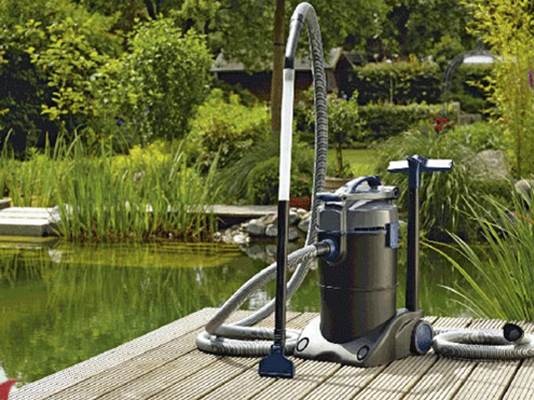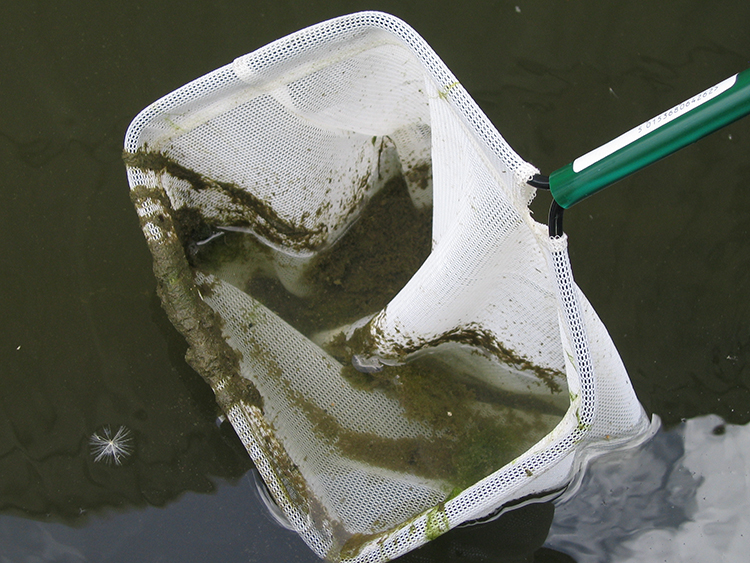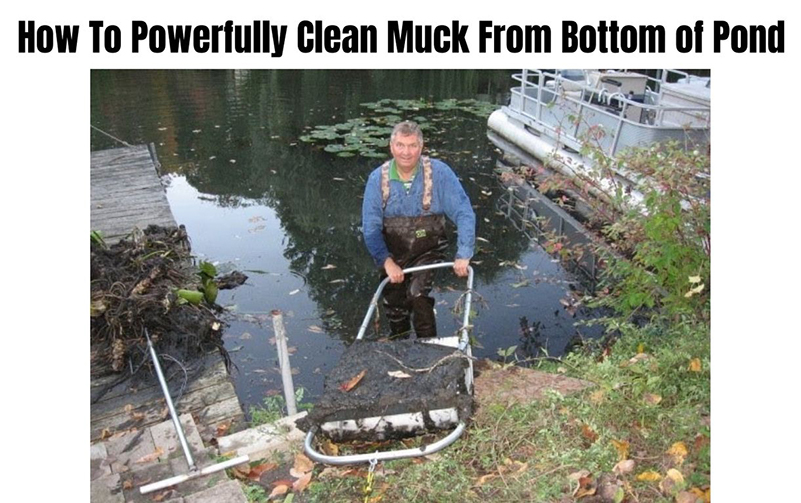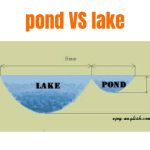To clean the muck from the bottom of the pond, use a pond vacuum or rake to remove debris and algae. Having a clean and well-maintained pond is essential for a healthy ecosystem.
Over time, ponds can accumulate muck, which includes organic matter, dead leaves, algae, and other debris, affecting the water quality and overall aesthetics. To clean the muck from the bottom of the pond, there are a few effective methods available.
One option is to use a pond vacuum, which operates similarly to a regular vacuum cleaner and sucks up the debris from the pond’s surface and bottom. Another method is to use a pond rake, which allows you to physically remove the muck by raking it out.
Both methods are efficient and can help restore the beauty and health of your pond. We will explore these methods in more detail and provide step-by-step instructions on how to clean muck from the bottom of a pond.
Importance Of Cleaning Pond Muck
When it comes to maintaining a healthy pond ecosystem, cleaning the muck from the bottom is of utmost importance. Pond muck, consisting of organic debris, dead plants, and fish waste, can accumulate over time and have detrimental effects on the overall health of the pond.
Maintaining Healthy Ecosystem
Cleaning pond muck is essential for maintaining a healthy ecosystem. The buildup of organic matter at the bottom of the pond can lead to decreased oxygen levels, which can harm fish and other aquatic life.
Preventing Algae Blooms
Additionally, removing muck helps prevent green algae from pond. Excessive muck provides a nutrient-rich environment for the rapid growth of algae, leading to unsightly and potentially harmful blooms that can disrupt the balance of the pond ecosystem.
Understanding Pond Muck
Composition Of Pond Muck
Pond muck is mainly composed of organic matter, such as fallen leaves, dead plants, and organic debris that accumulate at the bottom of the pond. Additionally, it may contain sediment, algae, and various microorganisms. Over time, this organic material decomposes, creating a dark, slimy layer known as pond muck.
Impact On Water Quality
The accumulation of muck can have significant impacts on water quality. As the organic matter decomposes, it releases nutrients into the water, leading to excessive algae growth and poor water clarity. This can ultimately result in oxygen depletion and foul odors, impacting the overall ecosystem of the pond and the health of aquatic life.
Tools And Equipment Needed
Before embarking on the task of cleaning the muck from the bottom of your pond, it is essential to gather the necessary tools and equipment to ensure efficiency and safety.
Dredging Tools
- 1. Pond rake – to remove surface debris easily.
- 2. Pond vacuum – for deeper cleaning of muck and sediment.
- 3. Aquatic weed cutter – to trim and remove unwanted plants.
Protective Gear
- 1. Rubber boots – to keep your feet dry and protected.
- 2. Work gloves – for handling tools and debris safely.
- 3. Safety goggles – to shield your eyes from splashes and debris.

Credit: www.swelluk.com
Best Practices For Efficient Cleaning
Cleaning the muck from the bottom of your pond is an essential task to maintain its health and beauty. However, it’s important to approach this process with caution to protect the aquatic life in your pond. In this section, we will outline the best practices that will help you efficiently clean the muck from the bottom of your pond while ensuring the well-being of your aquatic residents.
Planning The Cleaning Process
Before you begin cleaning the muck from your pond, it is crucial to have a well-thought-out plan in place. This will ensure that the cleaning process is carried out smoothly and effectively. Here are some steps to consider when planning your cleaning process:
- First, assess the size of your pond and determine the amount of muck that needs to be removed. This will help you estimate the time and resources required for the task.
- Identify the best time for cleaning, preferably during the cooler months when aquatic life is less active. This will minimize disturbances to the ecosystem of your pond.
- Invest in the necessary tools and equipment such as pond vacuums, nets, or pumps to aid in the cleaning process. These tools will help you efficiently remove muck from the bottom without disrupting the balance of your pond.
Avoiding Harm To Aquatic Life
While cleaning the muck from the bottom of your pond, it is crucial to ensure the safety and well-being of the aquatic life residing in it. Here are some guidelines to follow:
- Take precautionary measures to avoid stirring up excessive sediment during the cleaning process. Excessive sediment can disrupt the water quality, oxygen levels, and overall health of the pond.
- Use a fine mesh net or sieve to capture any small organisms or fish that may accidentally get caught up in the muck. Carefully transfer them to a temporary holding tank or container filled with pond water while the cleaning process is underway.
- To prevent harm to fish and other aquatic organisms, handle them gently and avoid using harsh chemicals or cleaning agents that can be toxic to the pond ecosystem.
- Consider relocating fragile or sensitive species to a separate temporary holding area during cleaning, if feasible.
Following these best practices for efficient cleaning will ensure that your pond remains healthy and beautiful while minimizing harm to its inhabitants. Take the time to plan your cleaning process and prioritize the well-being of the aquatic life in your pond to maintain a thriving ecosystem.
Step-by-step Cleaning Guide
When it comes to maintaining a pond, one of the essential tasks is cleaning the muck from the bottom. The accumulation of muck can not only spoil the appearance of your pond but also compromise its overall health. In this step-by-step cleaning guide, we will walk you through the process of effectively cleaning the muck from the bottom of your pond. From assessing the pond depth to using dredging equipment safely, we’ve got you covered.
Assessment Of Pond Depth
To begin the cleaning process, it’s crucial to assess the depth of your pond. This information will help you determine the appropriate method and equipment required for removing the muck effectively. You can use a pond depth probe or a long stick with markings to measure the depth at various points in your pond. Note down the measurements in a table for reference:
| Measurement Point | Depth (in feet) |
|---|---|
| Point 1 | 4.5 |
| Point 2 | 3.8 |
| Point 3 | 5.2 |
Using Dredging Equipment Safely
If your pond has a significant amount of muck that needs to be removed, using dredging equipment can be incredibly helpful. However, it is essential to prioritize safety during the operation. Here are the steps to follow:
- Ensure you have the necessary personal protective equipment (PPE), including gloves, goggles, and a face mask.
- Familiarize yourself with the manufacturer’s instructions for the specific dredging equipment you will be using. This will help you understand its operation and any safety precautions.
- Clear the area around the pond to create a safe working space. Remove any obstacles or potential hazards.
- Position the dredging equipment at a suitable location, considering factors such as stability and accessibility.
- Start the dredging process gradually, keeping an eye on the equipment’s performance and surroundings. Regularly check for any signs of malfunction or potential dangers.
- Work in a systematic manner, moving the equipment methodically across the bottom of the pond. Avoid abrupt movements or excessive force that may disturb the pond ecosystem.
- Periodically inspect the dredging equipment and remove any accumulated muck or debris to maintain its efficiency.
- Once the dredging process is complete, clean and store the equipment properly for future use.
By following these safety measures, you can ensure a successful and hazard-free muck cleaning process using dredging equipment.

Credit: pondaquariumproblemsolver.co.uk
Disposal Of Removed Muck
When removing muck from the bottom of a pond, it’s essential to dispose of it properly to avoid negative impacts on the environment. Consider these methods:
- 1. Use Biodegradable Bags: Place the removed muck in biodegradable bags for easy containment.
- 2. Composting: Muck can be composted for use as fertilizer in gardens, following proper composting guidelines.
- 3. Local Waste Management: Check with local authorities for guidelines on disposing of pond muck, some areas may offer special disposal options.
When disposing of removed muck, be mindful of the environmental impact and consider the following:
- 1. Filtering: Ensure the muck is filtered to remove any large debris before disposal.
- 2. Avoid Water Bodies: Do not dispose of muck near water bodies to prevent contamination.
- 3. Land Application: When possible, consider land application in areas where the muck can provide nutrients for vegetation.
Maintenance Tips To Prevent Muck Buildup
Regular maintenance is essential to prevent muck buildup at the bottom of your pond. Follow these tips to effectively clean and maintain your pond, ensuring a healthy and beautiful environment for aquatic life.
Maintenance Tips to Prevent Muck Buildup Regular Monitoring Regular monitoring of your pond is essential to prevent muck buildup. This involves keeping an eye on the water quality, the amount of debris, and the overall health of the pond ecosystem.
By conducting regular inspections, you can catch potential issues early and take preventive measures to minimize muck accumulation. Implementing Aeration Implementing aeration is a key strategy to prevent muck buildup in your pond. Aeration helps to circulate the water, introduce oxygen, and promote beneficial bacteria growth, which can aid in breaking down organic matter and preventing muck formation.
By incorporating aeration systems such as fountains, diffusers, or aerating plants, you can effectively reduce muck accumulation and maintain a healthier pond environment.

Credit: pondmedics.com
Professional Pond Cleaning Services
Cleaning muck from the bottom of a pond can be a challenging task, requiring specialized knowledge and equipment. While some pond owners may choose to tackle this job themselves, others prefer to seek the expertise of professional pond cleaning services. These services offer a range of benefits, including thorough cleaning, expert advice, and time savings. Here’s what you need to know about professional pond cleaning services.
When To Seek Professional Help
If you notice excessive muck buildup in your pond, foul odors, or declining water quality despite your regular maintenance efforts, it may be time to seek professional help. Professional pond cleaning services have the experience and equipment to address severe muck accumulation and restore the balance of your pond ecosystem.
Choosing The Right Service Provider
When selecting a professional pond cleaning service, it’s essential to consider factors such as experience, expertise, and customer reviews. Look for a provider that specializes in pond maintenance and has a proven track record of successful cleanups. Additionally, ensure that the chosen service provider is licensed and insured to protect both you and your property.
Frequently Asked Questions
Q: How do I effectively clean muck from the bottom of my pond?
A: Use a pond vacuum or rake to remove debris, or introduce beneficial bacteria to break down organic matter effectively.
Q: Is it safe to use chemicals to clean pond muck?
A: It’s best to avoid harsh chemicals as they can harm aquatic life. Opt for natural methods like aeration and bacteria additives to maintain a healthy ecosystem.
Q: How often should I clean the bottom of my pond?
A: Aim for seasonal cleanings, especially in spring and fall, to prevent excess buildup of muck and maintain optimal water quality for aquatic life.
Q: Can I use a pressure washer to clean pond muck?
A: Pressure washers can disrupt the pond ecosystem and stir up sediment, leading to water quality issues. Stick to gentler cleaning methods to avoid harming aquatic organisms.
Q: Will cleaning the pond bottom disturb fish and plants?
A: Yes, cleaning activities can temporarily disturb aquatic life. Minimize disturbances by working slowly and avoiding aggressive cleaning methods to ensure the well-being of fish and plants.
Q: Are there any long-term solutions to prevent muck buildup in my pond?
A: Implement practices like installing aeration systems, adding beneficial bacteria regularly, and maintaining a balanced ecosystem to prevent muck accumulation over time, promoting a healthier pond environment.
Final Words
Eradicating pond muck enhances water quality, ecosystem health, and overall pond aesthetics. By implementing effective cleaning methods, such as using beneficial bacteria or manual removal, you can maintain a balanced pond environment. Regular maintenance is key to preventing muck buildup and promoting a thriving aquatic habitat.





